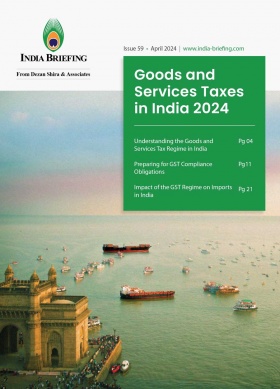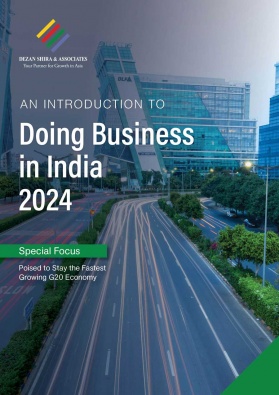Where Are India’s Talent Hubs? Findings from New Talent Feasibility Study
India’s tier-1, tier-2, and satellite cities like Hyderabad, Navi Mumbai, Chennai, Pune, Gurugram, and Bengaluru have become specialized hiring hubs and are rising to the increasing demand from recruiters seeking diverse talent.
In 2023, India’s population aged between 18 and 35 years was more than 600 million, with approximately 65 percent of the total population being younger than 35 years. India’s demographic advantage is expected to last till 2055-56, with a peak projected for 2041 when the working age population (18-60 years cohort) will reach 59 percent of the total population.
Such an extensive labor pool will contribute to the regional and global talent pipeline and prospective employers must pay attention to recruitment and educational trends across the country.
While policymakers face the challenge of equipping India working age individuals and youth with job market-relevant skills, an emerging role is also appearing for corporate firms to pursue mixed strategies of mass hiring in lower cost cities and in-house upskilling.
Further, the expansive Indian population will ensure availability of highly qualified individuals – particularly close to education hubs, metropolitan cities and their satellite cities, and densely industrialized states.
Where are India’s talent hubs?
According to a report by global consultancy KPMG, Hyderabad, Navi Mumbai, and Pune have emerged as dynamic talent hubs in India.
The KPMG report highlights the shifting employment landscape in Indian cities, where Tier 2 and satellite cities are gaining prominence alongside major metros. The government has proactively facilitated business development in the country by establishing Special Economic Zones (SEZs) to promote the IT industry in non-Tier-1 locations, resulting in overall growth.

Source: KPMG India Talent Feasibility Study 2024
Factors such as talent availability, government support, infrastructure development, and cost considerations are reshaping organizational location strategies and talent acquisition approaches.
Several Indian cities are dedicating resources to infrastructure development initiatives, enhancing connectivity, transportation, and amenities. These enhancements render the cities more appealing to corporate firms by providing superior logistics, market accessibility, and an improved quality of life for employees.
At least 90 percent of companies utilizing the talent pool of satellite cities like Navi Mumbai and Gurugram report high satisfaction with the outcomes. KPMG India’s talent availability study identifies a unique talent pool across tier-1 locations, with Mumbai, Delhi, and Bengaluru attracting talent from diverse industries and showing the highest concentration of highly qualified talents.
Cities like Hyderabad, Navi Mumbai, and Pune have stepped up to meet growing demands and are emerging as go-to hubs for recruiters seeking diverse talent with specialized skill sets. The nature of work impacts organizational decision-making, with Tier 2 cities often hosting transactional and operational roles. In contrast, tactical and transformational roles are usually situated near headquarters in Tier 1 cities and certain satellite cities, according to the report.
Additionally, 90 percent of surveyed companies find that tapping into the talent pool of satellite cities has been highly beneficial, allowing them to broaden their talent base and attract high-quality candidates who seek work while being close to their families and support networks.
The report also noted Tier 1 cities like Mumbai, Delhi, Bengaluru, and Hyderabad accounted for the highest attrition rates due to intense competition among concentrated industry and service hubs and in the pursuit of career growth opportunities. In contrast, satellite cities like Navi Mumbai and Noida, and Tier 2 cities like Kochi and Indore, experienced comparatively lower attrition rates. This could be attributed to better work-life balance, proximity to family and support networks, and the availability of diverse career opportunities.
What are employers in India seeking?
India’s estimated employment rate in 2024 is 51.60 percent, and organizations are increasingly exploring prospects in tier 2 and satellite cities to adapt to the evolving employment landscape.
Critical factors for employers in India include talent availability, ease of doing business in the area, operational costs, social infrastructure, and market potential. How these combination of factors apply differs from industry to industry and organizational goals.
Interestingly, KPMG’s 2023 India CEO Outlook report indicated that 54 percent of CEOs in India, compared to 64 percent globally, anticipated employees transitioning back from hybrid to more in-office arrangements in the next three years. This expectation is bound to influence hiring trends as hybrid and remote work allowed individuals to live closer to their families and relocate to hometowns.
What do employees prioritize?
Indian talents give importance to factors like living costs and quality of life, social culture, market competition and diverse job prospects in the area, and proximity to home. Safety, connectivity and transport convenience, cleaner environment, recreational activities, healthcare facilities, education, etc. are all important concerns.
These factors collectively shape individual career trajectories and chances of cross-sector professional movement, besides salary considerations and ability to achieve a work-life balance.
KPMG report methodology
To arrive at its findings in the 2024 Talent Feasibility Study, KPMG conducted extensive research, including discussions with industry leaders and talent acquisition heads across multiple sectors, such as Technology, BFSI, Professional Services, Manufacturing, TMT, E-commerce, Automobile, Infrastructure, and Real Estate, and monitoring recruitment via portals like LinkedIn. Data was collected from 40+ companies spread equally across 10+ sectors.
The research focused on key factors from both employer and employee perspectives, such as talent pool, quality of living, cost of living, ease of business, attrition, and compensation, providing valuable insights into decision-making regarding office locations.
About Us
India Briefing is one of five regional publications under the Asia Briefing brand. It is supported by Dezan Shira & Associates, a pan-Asia, multi-disciplinary professional services firm that assists foreign investors throughout Asia, including through offices in Delhi, Mumbai, and Bengaluru in India. Dezan Shira & Associates also maintains offices or has alliance partners assisting foreign investors in China, Hong Kong SAR, Vietnam, Indonesia, Singapore, Malaysia, Mongolia, Dubai (UAE), Japan, South Korea, Nepal, The Philippines, Sri Lanka, Thailand, Italy, Germany, Bangladesh, Australia, United States, and United Kingdom and Ireland.
For a complimentary subscription to India Briefing’s content products, please click here. For support with establishing a business in India or for assistance in analyzing and entering markets, please contact the firm at india@dezshira.com or visit our website at www.dezshira.com.
- Previous Article Why Foreign Portfolio Investors May Soon Prefer India’s GIFT IFSC Over Traditional Investment Routes
- Next Article Guide to India’s Foreign Manufacturer Certification Scheme








